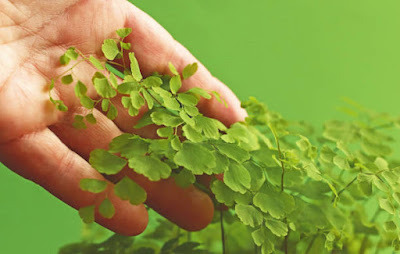Herbs And Herbalism - Maidenhair Fern
Maidenhair Fern - Venus Hair
Because the leaf repels water and the plant's native habitat is a wet environment, the generic name Adiantum comes from the Greek word adiantos, which means "unwetted."
- The pudenda's hair following the fine, glossy, black petioles is referred to by both the specific and colloquial names.
- This was formerly the most significant botanical component in Capillaire, a popular cough syrup that was used into the eighteenth century.
Description Petioles are tiny, fragile, black, and glossy on this perennial fern that grows 10-40 cm tall.
- Pinnules fan-shaped and serrated, leaves oblong to narrowly triangular, delicately pinnate, sori reddishbrown on the underside of leaf tips.

Distribution - Great Britain, central and southern Europe are all home to this species.
- Now available in temperate and tropical climates all around the globe.
- Especially near the sea, in caves, wells, and on wet walls; cliffs, and chalky soils; but even up to 1300 meters.
Cultivation in the wild Cultivated as a pot plant in a loam and leaf mold mix: moist environment required.
- Propagation is accomplished via division.
Constituents Mucilage; tannins; gallic acid: sugars; bitter ingredients of different kinds: capillarine: a very small amount of an essential oil.
- Occasionally uses fresh or dried leafy fronds Bechic: weak emmenagogue: weak diuretic: weak expectorant
- Mostly used for chest symptoms including respiratory catarrh and coughing.
- Pleurisy and asthma were formerly treated with it, although the latter had little impact.





